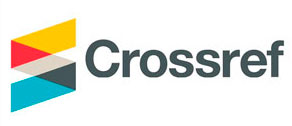PENGUKURAN KEPUASAN MAHASISWA TERHADAP KUALITAS LAYANAN PENDIDIKAN DI IBI DARMAJAYA DENGAN METODE IMPORTANCE-PERFORMANCE ANALYSIS
Abstract
A quality education system is closely related to the quality of human resources. According to the National Higher Education Accreditation Board (BAN-PT), the demands given by the community to universities included quality assurance, quality control, and quality improvement. IBI Darmajaya realizes that meeting the demands of society for the quality of higher education is not only to get good accreditation from BAN-PT. The analysis was carried out by surveying 447 students of IBI Darmajaya who were taken randomly to find out the level of suitability between students' expectations and satisfaction that the average in reviewing the Academic Aspects, Administrative Services and Facilities, Student Systems, and Contribution to Student Study Success was not Satisfied or In Accordance with expectations, but from aspects that support students 'skills (skills) are in line with students' expectations. From the results of mapping the quality of education services in IBI Darmajaya in knowing things that are maintained in the review of Academic Aspects, Administration and Facilities Services, Student Systems, and Contributions to the Success of Student Studies, among others, the new student admission system, the System On course Line, Suitability of material taught by available work, Methods of delivery of material by lecturers, Mastery of lecturers on material, payment system for tuition fees, religious facilities. Ability in interpersonal relationships with others, Ability in decision making, Ability in planning activities, Ability to work in teams, Ability to work independently, leadership skills, confidence, following orientation activities for new students, following areas of interest and reasoning competition. While the need to increase IBI Darmajaya to improve the quality of education services includes: Submission of announcements by IBI Darmajaya to students, System Assessment courses by lecturers, lecture facilities, laboratory facilities, internet facilities, canteen facilities, campus organization facilities, communication, ability to implement activity plans
Keywords
Full Text:
PDFDOI: http://dx.doi.org/10.36448/jak.v9i2.1222











